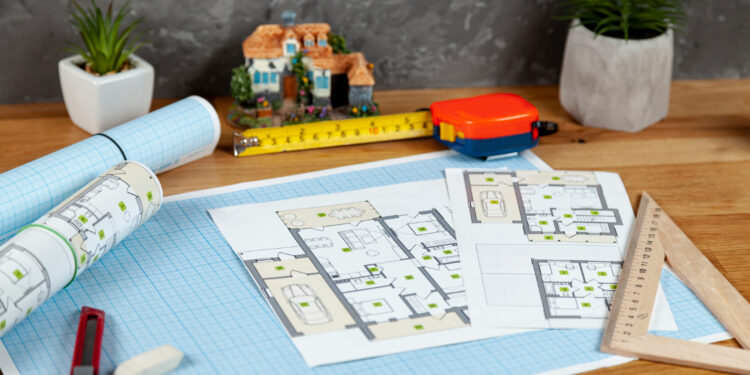Floor estimations are pivotal in the success of residential construction and renovation projects. Accurate estimations ensure that the right materials are procured, labor costs are well-budgeted, and the project progresses smoothly. There are several key factors that can greatly influence floor estimations in residential projects. Firstly, the size and layout of the space play a crucial role in determining the amount of materials needed and the complexity of labor involved. A larger area with intricate designs or irregular shapes will require more time and resources compared to a smaller, simpler space.
Another factor to consider is the type of flooring material chosen for the project. However, more factors can influence floor estimations, and it’s crucial for contractors and estimators to consider these variables to provide precise and reliable estimates. According to the flooring estimate company, their services offer accurate cost projections and expert guidance for a successful flooring project, as referenced on their website. In this article, we will explore the key factors affecting floor estimations in residential projects.
1. Type of Flooring Material
Material Selection
The choice of flooring material significantly impacts the estimation process. Different materials, such as hardwood, laminate, vinyl, ceramic tiles, or carpet, have varying price points and installation complexities. Hardwood flooring is often considered a premium option due to its elegant and timeless appeal. It comes in various types, such as oak, maple, or walnut, each with its own unique characteristics and price range. Hardwood floors require professional installation and regular maintenance to ensure longevity.
Laminate flooring offers the look of hardwood but at a more affordable price point. It consists of multiple layers that are fused together using heat and pressure.
Quality and Cost
High-quality materials may come with a higher upfront cost but could offer better durability and long-term savings. Consider the client’s preferences and budget constraints when recommending flooring options.
2. Area Size and Layout
Accurate Measurements
The size and layout of the area to be floored are critical for precise estimations. Accurate measurements of each room, including closets and hallways, ensure that the right quantity of materials is ordered. In order to obtain accurate measurements, it is important to take into account any irregularities or asymmetrical features within the area. This includes measuring the length and width of each room, as well as any alcoves or protruding areas that need to be accounted for. Additionally, closets and hallways should not be overlooked, as these spaces also require flooring materials.
Irregular Shapes and Angles
Rooms with irregular shapes or angled walls may require more precise calculations and additional material wastage, impacting the overall estimation.
3. Floor Preparation
Subfloor Condition
The condition of the subfloor is crucial for successful flooring installation. Additional costs and labor hours must be factored into the estimation if the subfloor needs repairs or leveling. Additionally, an uneven or damaged subfloor can lead to a poor final result and potential future flooring issues. Therefore, it is essential to thoroughly assess the subfloor condition before proceeding with any flooring installation.
One common issue that may require repairs is water damage. If there are signs of moisture or water stains on the subfloor, it will need to be addressed before installing new flooring. This may involve drying out the area, replacing damaged sections, or even addressing underlying plumbing issues.
Moisture and Vapor Barriers
For areas prone to moisture, installing moisture or vapor barriers is necessary. These additional materials and labor should be included in the estimation.
4. Labor Costs
Skill and Experience
The expertise and experience of the laborers involved can affect labor costs. Skilled professionals may charge higher rates but can ensure a higher-quality installation. Additionally, experienced laborers tend to work more efficiently and effectively, which can result in lower overall labor costs. Their expertise allows them to complete tasks more quickly and accurately, reducing the time needed for troubleshooting or redoing work.
Skilled professionals have typically undergone extensive training and education in their respective fields. This knowledge enables them to handle complex installations with precision and attention to detail.
Installation Complexity
The complexity of the flooring installation, such as intricate patterns or unique designs, can impact labor hours and subsequently, the overall estimation.
5. Project Timeline
Rushed Projects
Tight deadlines and rushed projects may require additional labor or overtime costs, affecting the overall estimation. In a project timeline where projects are rushed and deadlines are tight, the need for additional labor or overtime costs becomes inevitable. The pressure to complete tasks quickly can lead to increased workloads and the need for more hands on deck.
When projects are rushed, there may be a shortage of time for proper planning and execution. As a result, teams might have to work longer hours or hire extra personnel to meet the accelerated schedule.
Estimating companies in the USA offer professional cost assessment services, aiding businesses in efficient budgeting and successful project execution.
Seasonal Considerations
Seasonal factors, such as extreme temperatures or weather conditions, can influence the project timeline and labor availability, impacting the estimation.
6. Additional Features and Details
Trim and Finishing
The inclusion of trim pieces, molding, and other finishing details adds to the overall flooring costs.
Special Requirements
If the project involves any unique features or specialized requirements, such as heated floors or custom designs, these should be accounted for in the estimation.
7. Market and Location
Local Prices
Regional market rates and local material costs can vary, so estimators must consider the location of the project when calculating estimates. Estimators need to take into account the local prices and regional market rates when calculating project estimates. The cost of materials can vary significantly depending on the location, as different regions may have different availability and pricing structures for construction resources.
For example, a project in a rural area might have access to cheaper raw materials due to proximity to suppliers or lower transportation costs. On the other hand, an urban project might face higher material costs due to limited space, increased demand, or higher overhead expenses.
Supplier Discounts
Building strong relationships with suppliers may lead to discounts on materials, positively impacting the overall estimation.
Conclusion
Floor estimations in residential projects require careful consideration of various factors that can influence the cost and timeline of the project. The type of flooring material, accurate measurements of the area, floor preparation, labor costs, project timeline, additional features, and the market and location all play crucial roles in determining the estimation. The printable flooring estimate template simplifies project planning by providing a convenient and organized way to calculate costs and materials. By thoroughly assessing these key factors and using advanced technology to aid in calculations, estimators and contractors can provide precise and reliable floor estimations that lead to successful residential projects and satisfied clients.
FAQs
Q: How does the choice of flooring material affect floor estimations?
A: Different flooring materials have varying price points and installation complexities, which influence the overall estimation.
Q: Why is accurate measurement of the area important for floor estimations?
A: Accurate measurements ensure that the right quantity of materials is ordered and that estimations are precise.
Q: What factors should be considered when calculating labor costs?
A: Factors such as the laborers’ skill and experience and the installation’s complexity can impact labor costs.
Q: How do project timelines affect floor estimations?
A: Tight deadlines or seasonal considerations may require additional labor or affect labor availability, influencing the estimation.
Q: Why is considering the location and local market important for estimations?
A: Regional market rates and local material costs can vary, affecting the overall estimation. Building relationships with suppliers may lead to discounts.
Also Read Interesting Articles At: Tech New Master.















